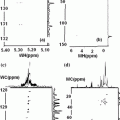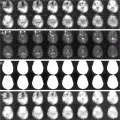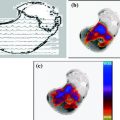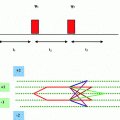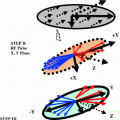and Rakhi Kaila2
(1)
School of Physics, University of New South Wales, Sydney, NSW, Australia
(2)
School of Medicine, University of New South Wales, Sydney, NSW, Australia
Abstract
The quantum science (QS) of the brain needs to be developed right from the grass roots. It would be an ideal thing to build it as a formal source of learning for medical professionals. The newly emerging QMRI (muti-quantum magnetic resonance imaging) technology is based on QS. It is not easy to present that kind of knowledge via a work like this. What this work has done is, that it has made a beginning. It is hoped that later this will be followed by a more comprehensive work. It would be worth taking up the venture of writing a text book in this field at the undergraduate level and even at the secondary level of education. This would require tremendous amount of time and resources at one’s disposal. It is not easy to obtain that unfortunately in the present state of environment of the science. The status of science and opportunities to participate in the research and development in the field of QMRI and neuroscience is very limited for scientists at large. It is available only at limited number of places in the world and to limited number of people, unfortunately. Availability of wider research participation in the field is only a part of the problem. Transmission of the newly emerging knowledge by research, to a wider community is very crucial and quicker the better. This aspect is not easy to fulfill. As the gap between the known and the unknown, keeps on becoming wider the chance of catching up becomes even slower.
Is our brain a coordinated spin (tiny molecular magnet)-ensemble, quantum computer? Answer to this question lies in the fact as to how much do we know about the physics, chemistry and mathematics (PCM) that is happening in our brain. MRI does provide some clues to this aspect of our brain. As one goes to smaller and smaller (sub-voxel) volumes (micron to nm scale) of the brain i.e. approaching molecular quantum science in the brain we are in fact trying to get an answer to the question. MRI picture of the brain at Sub-voxel level can be predicted using the quantum mathematics of the spins (e.g. BH, 31P, 13C, etc. nuclei) in a real ensemble like our brain. This has been and being done to get multi-quantum coherence images in MRI. Where MRI becomes quantum computing rather than just imaging is the place where one can visualize design of a quantum computer in the laboratory situation. MRI liquid state technology provides a chance to make a quantum computer at room temperature. This is in contrast to the solid-state technology where milli Kelvin (10−3 K) order of temperatures are being used to achieve the same. Those readers who are interested in learning details of the spin dynamics happening in our brain using the spin density matrix approach have the option in pursuing their interest through the preliminary spin matrix basics presented in the appendices, B, at the end of the first part of the book.
The quantum science (QS) of the brain needs to be developed right from the grass roots. It would be an ideal thing to build it as a formal source of learning for medical professionals. The newly emerging QMRI (muti-quantum magnetic resonance imaging) technology is based on QS. It is not easy to present that kind of knowledge via a work like this. What this work has done is, that it has made a beginning. It is hoped that later this will be followed by a more comprehensive work. It would be worth taking up the venture of writing a text book in this field at the undergraduate level and even at the secondary level of education. This would require tremendous amount of time and resources at one’s disposal. It is not easy to obtain that unfortunately in the present state of environment of the science. The status of science and opportunities to participate in the research and development in the field of QMRI and neuroscience is very limited for scientists at large. It is available only at limited number of places in the world and to limited number of people, unfortunately. Availability of wider research participation in the field is only a part of the problem. Transmission of the newly emerging knowledge by research, to a wider community is very crucial and quicker the better. This aspect is not easy to fulfill. As the gap between the known and the unknown, keeps on becoming wider the chance of catching up becomes even slower.
The spread of the basic science education right from the secondary and later at tertiary level remains on decline. It further exacerbates the problem. One should note that the ability to learn the quantum science (QS) is easy to create when started at an early level of education. Learning about quantum science is no more difficult than any other area of basic education e.g. physics, mathematics and chemistry (PCM). It is only a matter of starting early. One can learn QS without going through detailed treatment, based on complex differential equations. Learning QS through quantum algebra, as an alternative approach, is available. Formal courses and text books are widely in circulation. They need simplification which is not difficult to achieve. One should realize that it is no more difficult learning quantum algebra than the classical algebra, already taught at the schools. It is a matter of introducing QS in the secondary school and then pursuing it earnestly at the tertiary level of education like any other discipline of science.
Learning QS is important for the future generations. It is intimately connected to the science of life. This awareness is missing in the present system of education in science world wide. As Newtonian Mechanics (NM) is the science of the dynamics of large rigid bodies QS is the science of the dynamics of the atoms and molecules. The large bodies e.g. the planets are in equilibrium and their dynamics is controlled through gravitational forces. On the other the plant and animal life has a confined ensemble of atoms and molecules performing function of day to day life. A typical example is the human body. Our body functions through quantum science. A young mind would certainly be curious to find out how his or her body works. It would be wise to introduce human physiology as part of science curriculum at the school level as soon as possible. Learning about one’s own body is no burden on young minds. Who wouldn’t want to? Learning about quantum algebra is as easy as learning about the numerology. Here the numbers are replaced by matrices. Matrices have their own rules of addition, multiplication, division, etc.
The elements of the matrices are functions representing some activity in the brain, in space and time. Computer mathematical softwares are now available to handle operation of matrices. In the present day of computers being available in every household it is time to raise the intellectual level of individual minds to a higher level the level of quantum science. The Chaps. 1 and 2 in this work were devoted to the simple basics of the reasons behind diamagnetism generated in an ensemble like our brain constituting electrons, atoms, macromolecules, tissues, fluids, etc. When the atoms and molecules are in free space there is no magnetic interaction between them. When they are brought together in a confined space then interactions between them is natural. Nature has evolved the molecular structure the way it is in our brain over millions of years and is to perform routine functions of life. The interaction between atomic and molecules is through their basic intrinsic diamagnetic character. This is basically the result of the angular momentum associated with the atoms and molecules. The angular momentum associated with the electrons is represented by the mathematical symbol S and that of the atoms and molecules by the symbol L. Even protons and neutrons inside the nucleus contribute angular momentum of their own. When the molecules are close to each other they add and subtract their angular momentum with certain allowed quantum values, as J = L ± S. They can not arbitrarily take up any values. They have to observe the laws of conservation of angular momentum.
Stay updated, free articles. Join our Telegram channel

Full access? Get Clinical Tree


